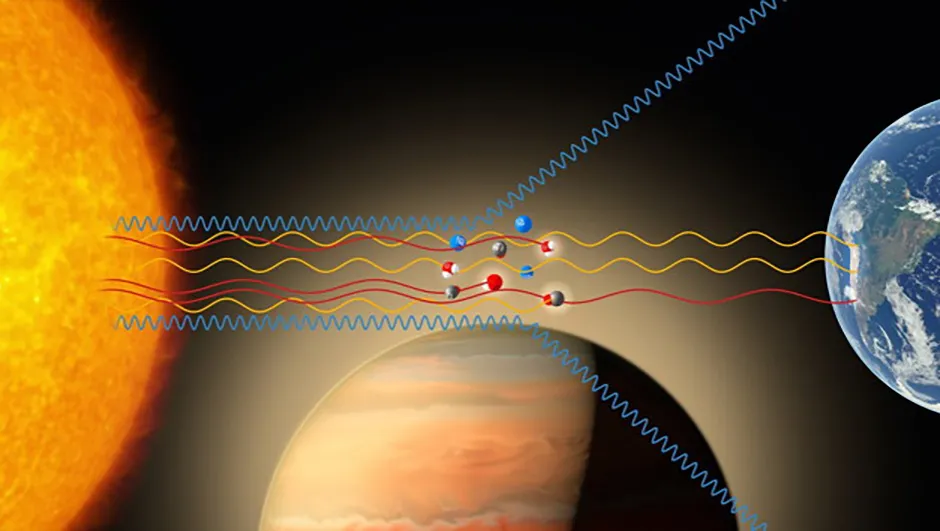The sky of a distant exoplanet is an inferno of titanium oxide, according to the latest images taken by ESO’s Very Large Telescope (VLT).The find will help unravel not only the chemical composition of the planet, called WASP-19b, but the temperature and pressure structure of its atmosphere.
The distant planet is about the same mass as Jupiter, but is in a much tighter orbit so it orbits its star every 19 hours.
The close proximity to its star means that temperatures can reach as high as 2,000ºC. But this might not be the only thing affecting the planet’s temperature.
“The presence of titanium oxide in the atmosphere of WASP-19b can have substantial effects on the atmospheric temperature structure and circulation,” says Ryan MacDonald, part of the team behind the study, from the University of Cambridge.
Titanium oxide, a substance rarely found on Earth, acts as an absorber of heat.
If enough is present in an atmosphere, it can cause something known as thermal inversion, where heat is absorbed in the upper levels of the atmosphere, making them cooler than lower layers.
On Earth, the ozone layer plays a similar roll by causing inversion in the stratosphere.
Titanium oxide was detected by observing the starlight that came through the planet’s atmosphere and searching for the spectral fingerprints it left behind in the light.

By analysing these signatures, the team were able to find small amounts of titanium oxide, water and traces of sodium alongside a scattering global haze.
“Detecting such molecules is, however, no simple feat,” says Elyar Sedaghati, who worked on the project for two years while a student at the European Southern Observatory.
“Not only do we need data of exceptional quality, but we also need to perform a sophisticated analysis.
“We used an algorithm that explores many millions of spectra spanning a wide range of chemical compositions, temperatures and cloud or haze properties in order to draw our conclusions,” adds Sedaghati.
The ability to find metal oxides will help future teams aiming to investigate the effect exoplanet atmospheres have on the worlds they surround.
This could help gauge the habitability of planets around distant stars.
